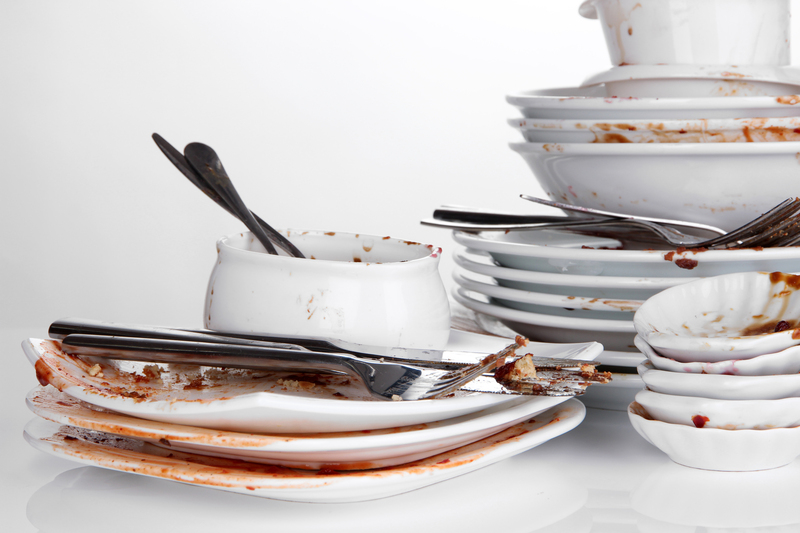Eco-Friendly Cleaning: Tips and Tricks
Posted on 23/09/2025
Eco-Friendly Cleaning: Tips and Tricks
In a world increasingly aware of the consequences of our collective environmental footprint, the concept of eco-friendly cleaning has gained considerable attention. Embracing a green cleaning routine helps reduce exposure to harmful chemicals, lowers waste, and minimizes negative impacts on ecosystems. This article delves into various tips and tricks for achieving a more sustainable and environmentally friendly cleaning routine at home.
Understanding Eco-Friendly Cleaning
Eco-friendly cleaning focuses on using products and methods that have a reduced environmental impact. It prioritizes natural ingredients, sustainable packaging, and responsible consumption practices. By opting for eco-friendly cleaning, one can improve indoor air quality, protect waterways, and contribute positively to overall environmental health.

Benefits of Eco-Friendly Cleaning
Adopting eco-friendly cleaning practices offers several advantages, including:
- Healthier Living Spaces: Conventional cleaning products often contain toxic chemicals that can harm respiratory health. Natural and organic cleaning products are typically free from these harmful substances.
- Environmental Preservation: Chemicals from conventional cleaners can end up in waterways, harming marine life and ecosystems. Eco-friendly cleaning products prevent such pollution.
- Cost Savings: Many eco-friendly cleaning solutions can be made from inexpensive household items like vinegar and baking soda, reducing the need for costly commercial products.
- Reduced Waste: Sustainable packaging and DIY cleaning products help lower the amount of plastic waste generated.
Essential Eco-Friendly Cleaning Ingredients
Several natural ingredients can serve as the backbone of a green cleaning routine. These include:
- Vinegar: Known for its antibacterial properties, vinegar is excellent for disinfecting surfaces, removing stains, and getting rid of odors.
- Baking Soda: Its abrasive nature makes it ideal for scrubbing and deodorizing. It's great for cleaning sinks, ovens, and other tough spots.
- Lemon: The acidity in lemon makes it a powerful cleaning agent, useful for cutting through grease and removing stains. It also leaves a fresh scent.
- Castile Soap: This plant-based soap can tackle almost any cleaning task, from washing dishes to scrubbing floors.
- Essential Oils: Adding essential oils like tea tree, lavender, or eucalyptus can enhance cleaning power and provide a pleasant aroma.
DIY Eco-Friendly Cleaning Recipes
Creating your own eco-friendly cleaning solutions is easier than you might think. Here are a few simple recipes to get you started:
All-Purpose Cleaner
- 1 part water
- 1 part white vinegar
- A few drops of essential oil (optional)
Mix the ingredients in a spray bottle and use it to clean countertops, sinks, and other surfaces.
Glass Cleaner
- 1 part water
- 1 part white vinegar
- 1 tablespoon cornstarch
Combine the ingredients in a spray bottle. Shake well before each use and spray on glass surfaces, then wipe with a lint-free cloth.
Baking Soda Scrub
- 1/2 cup baking soda
- A few drops of liquid Castile soap
Mix the ingredients to form a paste. Use it to scrub sinks, tubs, and stovetops. Rinse thoroughly after scrubbing.
Eco-Friendly Cleaning Tools
In addition to using natural cleaning products, leveraging the right tools can enhance your eco-friendly cleaning efforts:
- Microfiber Cloths: These reusable cloths are highly effective at trapping dirt and dust, often eliminating the need for chemical cleaners.
- Reusable Mop Pads: Swap out disposable mop pads for washable, reusable ones to reduce waste.
- Eco-Friendly Sponges and Brushes: Look for sponges made from natural materials and brushes with wooden handles and natural bristles.
- Compostable Scrubbers: Choose scrubbers made from biodegradable materials that can be composted at the end of their life.

Green Cleaning Tips and Tricks
Implementing eco-friendly cleaning practices involves more than just using natural products. Here are some additional tips and tricks to help you clean green:
Conserve Water
Water is a precious resource, so it's important to use it wisely when cleaning. Opt for a damp cloth over running water when wiping down surfaces. Use a bucket instead of a hose when cleaning outdoor areas.
Recycle and Reuse
Instead of throwing away old clothes or towels, cut them up and use them as cleaning rags. Reuse spray bottles for your homemade cleaning solutions to minimize plastic waste.
Choose Eco-Friendly Brands
If DIY cleaning isn't your style, numerous brands offer environmentally friendly cleaning products. Look for certifications like EcoCert, Green Seal, or the EPA's Safer Choice label to ensure you're purchasing truly green products.
Ventilate Your Home
Good ventilation helps maintain indoor air quality, especially when cleaning. Open windows and use fans to disperse any fumes from cleaning products, even if they are natural.
Declutter Regularly
A clutter-free home is easier to clean and maintain. Regularly go through your belongings and donate, recycle, or dispose of items you no longer need.
Conclusion
Eco-friendly cleaning is not just a trend; it's a responsible choice that benefits both your health and the environment. By incorporating natural ingredients, rethinking your cleaning tools, and adopting sustainable practices, you can create a cleaner, greener home. Implement these tips and tricks today to make a positive impact on your household and the planet.









